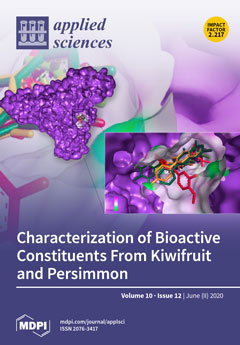The simultaneous use of crude glycerol and effluent from anaerobic digestate, both wastes derived from the biofuel industry, were tested in the frame of circular economy concept, as potential low-cost nutrient sources for the cultivation of rich in docosahexaenoic acid (DHA) oil microalgae
[...] Read more.
The simultaneous use of crude glycerol and effluent from anaerobic digestate, both wastes derived from the biofuel industry, were tested in the frame of circular economy concept, as potential low-cost nutrient sources for the cultivation of rich in docosahexaenoic acid (DHA) oil microalgae strain
Schizochytrium limacinum SR21. Initially, the optimal carbon and nitrogen concentration levels for high
S. limacinum biomass and lipids production were determined, in a culture media containing conventional, high cost, organic nitrogen sources (yeast extract and peptone), micronutrients and crude glycerol at varying concentrations. Then, the effect of a culture media composed of crude glycerol (as carbon source) and effluent digestate at varying proportions on biomass productivity, lipid accumulation, proximate composition, carbon assimilation and fatty acid content were determined. It was shown that the biomass and total lipid content increased considerably with varying effluent concentrations reaching 49.2 g L
−1 at 48% (
v/v) of effluent concentration, while the lipid yield at the same effluent concentration reached 10.15 g L
−1, compared to 17.0 g L
−1 dry biomass and 10.2 g L
−1 lipid yield when yeast extract and peptone medium with micronutrients was used. Compared to the control treatment, the above production was obtained with 48% less inorganic salts, which are needed for the preparation of the artificial sea water. It was shown that
Schizochytrium limacinum SR21 was able to remediate 40% of the total organic carbon content of the biofuel wastes, while DHA productivity remained at low levels with saturated fatty acids comprising the main fraction of total fatty acid content. The results of the present study suggest that the simultaneous use of two waste streams from the biofuel industry can serve as potential nutrient sources for the growth of
Schizochytrium limacinum SR21, replacing the high cost organic nutrients and up to one half the required artificial sea water salts, but upregulation of DHA productivity through optimization of the abiotic environment is necessary for industrial application, including aqua feed production.
Full article





